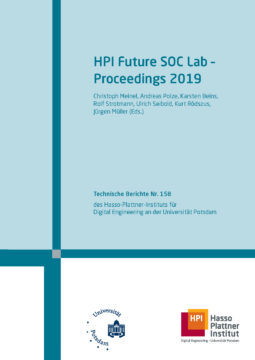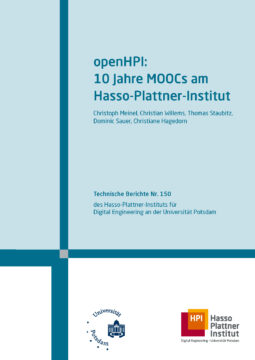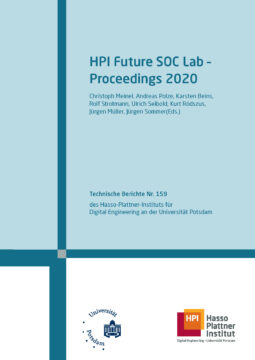These days design thinking is no longer a “new approach”. Among practitioners, as well as academics, interest in the topic has gathered pace over the last two decades. However, opinions are divided over the longevity of the phenomenon: whether design thinking is merely “old wine in new bottles,” a passing trend, or still evolving as it is being spread to an increasing number of organizations and industries. Despite its growing relevance and the diffusion of design thinking, knowledge on the actual status quo in organizations remains scarce. With a new study, the research team of Prof. Uebernickel and Stefanie Gerken investigates temporal developments and changes in design thinking practices in organizations over the past six years comparing the results of the 2015 “Parts without a whole” study with current practices and future developments. Companies of all sizes and from different parts of the world participated in the survey. The findings from qualitative interviews with experts, i.e., people who have years of knowledge with design thinking, were cross-checked with the results from an exploratory analysis of the survey data. This analysis uncovers significant variances and similarities in how design thinking is interpreted and applied in businesses.
Stefanie Gerken, Falk Uebernickel , Danielly de Paula
Past - Present - Future
ISBN: 978-3-86956-525-5
230 pages, Paperback
Release year 2022
40,00 €
Non-taxable transaction according to § 1 (1) UStG/VAT Act in combination with § 2 (3) UStG/VAT Act a. F. Providing this service, the University of Potsdam does not constitute a Betrieb gewerblicher Art/Commercial Institution according to § 1 (1) No. 6 or § 4 KStG/Corporate Tax Act. If the legal characterization of our business is changed to a commercial institution subsequently, we reserve the right to invoice VAT additionally. zzgl. Versandkosten
These days design thinking is no longer a “new approach”. Among practitioners, as well as academics, interest in the topic has gathered pace over the last two decades. However, opinions are divided over the longevity of the phenomenon: whether design thinking is merely “old wine in new bottles,” a passing trend, or still evolving as it is being spread to an increasing number of organizations and industries. Despite its growing relevance and the diffusion of design thinking, knowledge on the actual status quo in organizations remains scarce. With a new study, the research team of Prof. Uebernickel and Stefanie Gerken investigates temporal developments and changes in design thinking practices in organizations over the past six years comparing the results of the 2015 “Parts without a whole” study with current practices and future developments. Companies of all sizes and from different parts of the world participated in the survey. The findings from qualitative interviews with experts, i.e., people who have years of knowledge with design thinking, were cross-checked with the results from an exploratory analysis of the survey data. This analysis uncovers significant variances and similarities in how design thinking is interpreted and applied in businesses.
Recommended Books
-
 2024
2024Meinel, Christoph; Polze, Andreas; Beins, Karsten; Strotmann, Rolf; Seibold, Ulrich; Rödszus, Kurt; Müller, Jürgen (Hrsg.)
HPI Future SOC Lab – Proceedings 2019
0,00 €Non-taxable transaction according to § 1 (1) UStG/VAT Act in combination with § 2 (3) UStG/VAT Act a. F. Providing this service, the University of Potsdam does not constitute a Betrieb gewerblicher Art/Commercial Institution according to § 1 (1) No. 6 or § 4 KStG/Corporate Tax Act. If the legal characterization of our business is changed to a commercial institution subsequently, we reserve the right to invoice VAT additionally.
Add to cart -
 2015
2015Informatische Schlüsselkompetenzen
19,00 €Non-taxable transaction according to § 1 (1) UStG/VAT Act in combination with § 2 (3) UStG/VAT Act a. F. Providing this service, the University of Potsdam does not constitute a Betrieb gewerblicher Art/Commercial Institution according to § 1 (1) No. 6 or § 4 KStG/Corporate Tax Act. If the legal characterization of our business is changed to a commercial institution subsequently, we reserve the right to invoice VAT additionally.
zzgl. Versandkosten
Add to cart -
 2022
2022Christoph Meinel, Christian Willems, Thomas Staubitz, Dominic Sauer, Christiane Hagedorn
openHPI
Non-taxable transaction according to § 1 (1) UStG/VAT Act in combination with § 2 (3) UStG/VAT Act a. F. Providing this service, the University of Potsdam does not constitute a Betrieb gewerblicher Art/Commercial Institution according to § 1 (1) No. 6 or § 4 KStG/Corporate Tax Act. If the legal characterization of our business is changed to a commercial institution subsequently, we reserve the right to invoice VAT additionally.
Read more -
 2024
2024Meinel, Christoph; Polze, Andreas; Beins, Karsten; Strotmann, Rolf; Seibold, Ulrich; Rödszus, Kurt; Müller, Jürgen; Sommer, Jürgen (Hrsg.)
HPI Future SOC Lab – Proceedings 2020
Non-taxable transaction according to § 1 (1) UStG/VAT Act in combination with § 2 (3) UStG/VAT Act a. F. Providing this service, the University of Potsdam does not constitute a Betrieb gewerblicher Art/Commercial Institution according to § 1 (1) No. 6 or § 4 KStG/Corporate Tax Act. If the legal characterization of our business is changed to a commercial institution subsequently, we reserve the right to invoice VAT additionally.
Read more
Publisher Info
Contact
Potsdam University Library
University Press
Am Neuen Palais 10
14476 Potsdam
Germany
verlag@uni-potsdam.de
0331 977-2094
0331 977-2292





